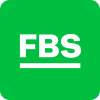Yield Spread
Yield Spread
Usually, debt instruments with different characteristics (maturity date/credit rating or risk) have different yields. Let’s take bond yields as an example and analyze the risks related to them. The bond yield is the return rate, which holders of bonds get if they have this bond until maturity and receive the cash flows at the promised dates. The risks include a credit risk, an interest rate risk, an inflation risk, etc.
We can divide the measures of yield spread into the nominal spread (G-spread), interpolated spread (I-spread), zero-volatility spread (Z-spread) and option-adjusted spread (OAS).
G-spread
Nominal spread (G-spread) represents the difference between Treasury bond yields and corporate bond yield with the same maturity. Treasury bonds have zero default risk, that is why the difference between corporate and Treasury bonds show the default risk. We can calculate the G-spread by using the following formula:
G-Spread = corporate bond’s yield – government bond’s yield
I-spread
Interpolated spread (I-spread) is the difference between a bond's yield and the swap rate. We can use LIBOR as an example. It shows the difference between a bond's yield and a benchmark curve. If the I-spread increases, the credit risk also rises. I-spread is usually lower than the G-spread.
Z-spread
This type of spread is also known as a zero-volatility spread. It is the spread that is added to each spot interest rate to cause the present value of the bond cash flows to equal bond’s price.
Option-adjusted spread
The option-adjusted spread is calculated as zero-volatility spread minus the call option’s value. There is a term “spread” in the Forex market, too. It is referred to the commission you pay a broker. The Forex spread is calculated as a difference between the bid and ask prices.
2020-09-15 • Updated











